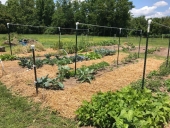








Seed the Mind, Harvest Ideas.
http://farmwhisperer.com













How permies.com works
What is a Mother Tree ?




The ultimate goal of farming is not the growing of crops, but the cultivation and perfection of human beings. - Masanobu Fukuoka













Seed the Mind, Harvest Ideas.
http://farmwhisperer.com




Brenda
Bloom where you are planted.
http://restfultrailsfoodforestgarden.blogspot.com/
 1
1








The ultimate goal of farming is not the growing of crops, but the cultivation and perfection of human beings. - Masanobu Fukuoka








The ultimate goal of farming is not the growing of crops, but the cultivation and perfection of human beings. - Masanobu Fukuoka








The ultimate goal of farming is not the growing of crops, but the cultivation and perfection of human beings. - Masanobu Fukuoka








 1
1





|
Drove my Chevy to the levee but the levee was dry. I wrung this tiny ad and it was still dry.
The new purple deck of permaculture playing cards
https://www.kickstarter.com/projects/paulwheaton/garden-cards
|






